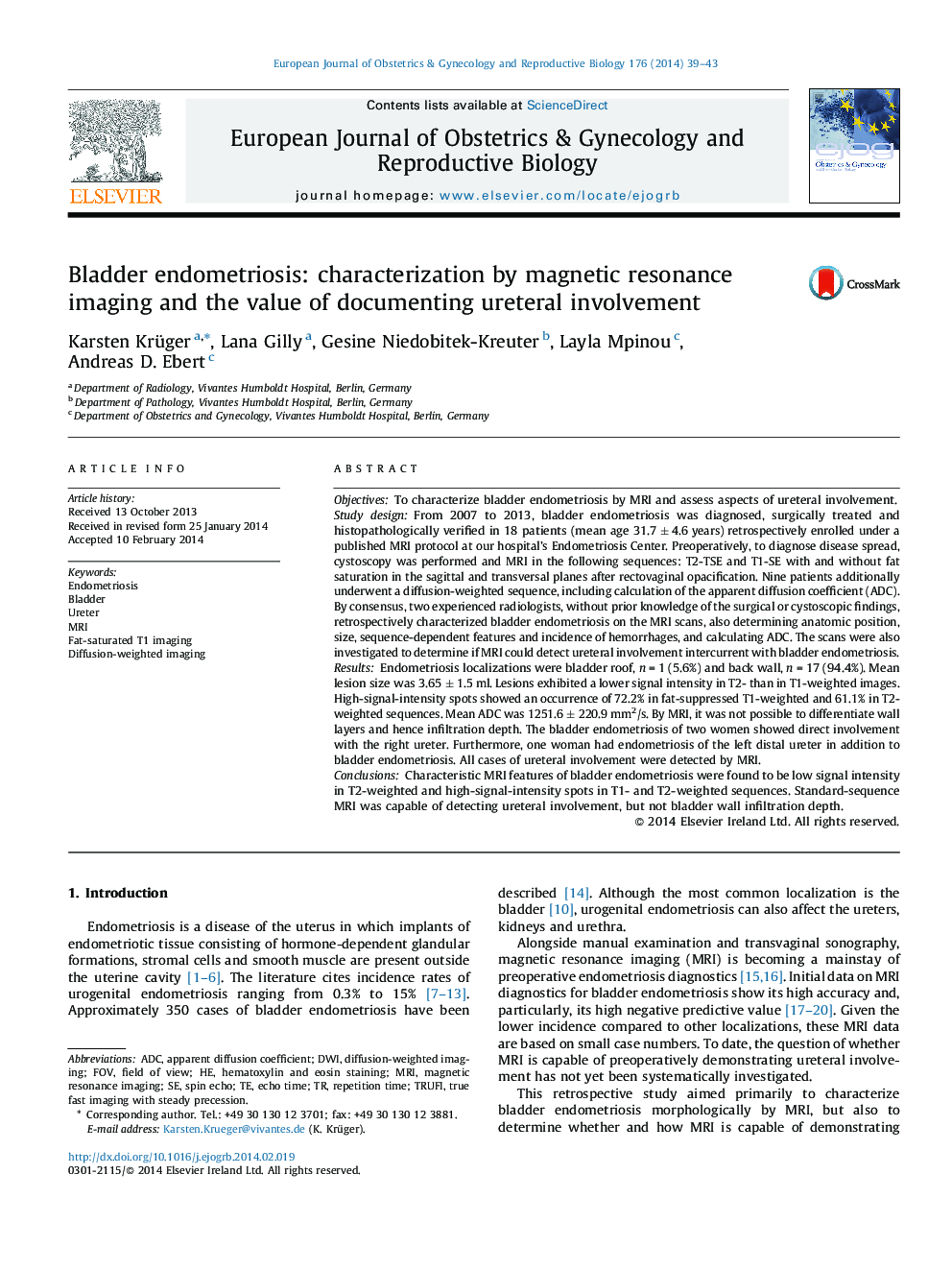| کد مقاله | کد نشریه | سال انتشار | مقاله انگلیسی | نسخه تمام متن |
|---|---|---|---|---|
| 3920062 | 1599805 | 2014 | 5 صفحه PDF | دانلود رایگان |
ObjectivesTo characterize bladder endometriosis by MRI and assess aspects of ureteral involvement.Study designFrom 2007 to 2013, bladder endometriosis was diagnosed, surgically treated and histopathologically verified in 18 patients (mean age 31.7 ± 4.6 years) retrospectively enrolled under a published MRI protocol at our hospital's Endometriosis Center. Preoperatively, to diagnose disease spread, cystoscopy was performed and MRI in the following sequences: T2-TSE and T1-SE with and without fat saturation in the sagittal and transversal planes after rectovaginal opacification. Nine patients additionally underwent a diffusion-weighted sequence, including calculation of the apparent diffusion coefficient (ADC). By consensus, two experienced radiologists, without prior knowledge of the surgical or cystoscopic findings, retrospectively characterized bladder endometriosis on the MRI scans, also determining anatomic position, size, sequence-dependent features and incidence of hemorrhages, and calculating ADC. The scans were also investigated to determine if MRI could detect ureteral involvement intercurrent with bladder endometriosis.ResultsEndometriosis localizations were bladder roof, n = 1 (5.6%) and back wall, n = 17 (94.4%). Mean lesion size was 3.65 ± 1.5 ml. Lesions exhibited a lower signal intensity in T2- than in T1-weighted images. High-signal-intensity spots showed an occurrence of 72.2% in fat-suppressed T1-weighted and 61.1% in T2-weighted sequences. Mean ADC was 1251.6 ± 220.9 mm2/s. By MRI, it was not possible to differentiate wall layers and hence infiltration depth. The bladder endometriosis of two women showed direct involvement with the right ureter. Furthermore, one woman had endometriosis of the left distal ureter in addition to bladder endometriosis. All cases of ureteral involvement were detected by MRI.ConclusionsCharacteristic MRI features of bladder endometriosis were found to be low signal intensity in T2-weighted and high-signal-intensity spots in T1- and T2-weighted sequences. Standard-sequence MRI was capable of detecting ureteral involvement, but not bladder wall infiltration depth.
Journal: European Journal of Obstetrics & Gynecology and Reproductive Biology - Volume 176, May 2014, Pages 39–43
